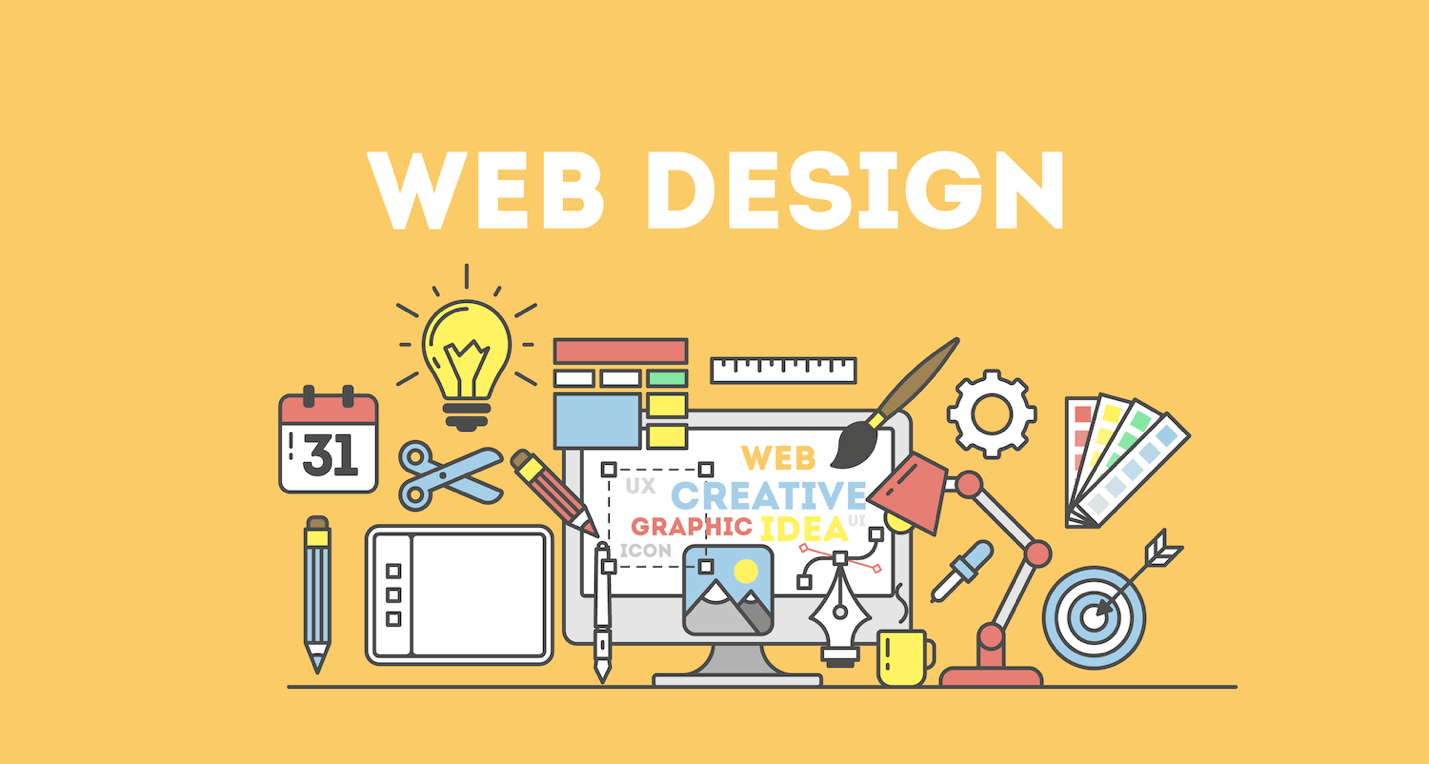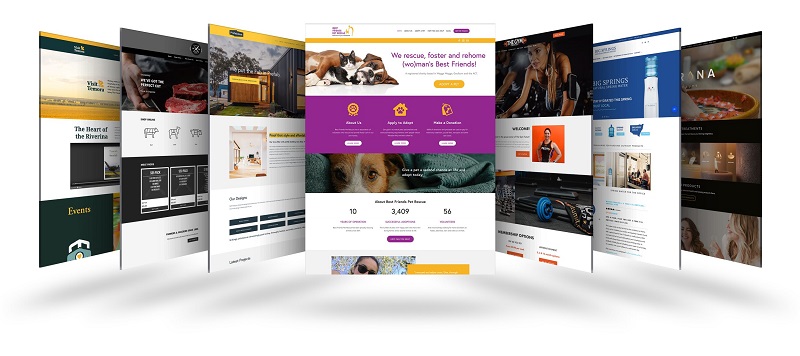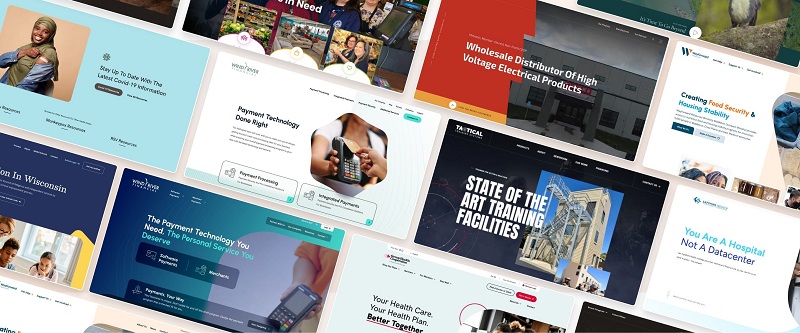Startups and small businesses increasingly rely on their websites to extend their reach and promote their products or services. In fact, studies indicate that 57.7% of small and medium-sized business owners are looking to invest in improving their websites. With the rise of mobile usage, businesses need websites more than ever to effectively connect with their customers.
However, simply launching a website isn’t enough. It must be user-friendly, fast, and have a modern, attractive design that resonates with today’s digital consumers. One key challenge many websites face is slow loading times. In fact, a single extra second of loading time can lead to lost visitors, and your competitors may gain the upper hand. Therefore, web designers must focus not only on fast-loading sites but also on trendy, contemporary designs that cater to modern expectations.
Website Design Trends in 2025
Here are some of the top trends expected to shape website design in 2025:
1. Responsive Design to Continue
Responsive design has been a dominant trend for several years, and it shows no sign of fading away. More and more businesses are adopting responsive designs to ensure their websites look and function seamlessly across various devices, including smartphones, tablets, and desktops.
As mobile and tablet usage continues to increase, the need for websites to adapt to small screens is essential. Responsive design ensures a website provides a positive user experience across all devices, which is increasingly becoming the standard, not just a trend.
Though there are debates on the most efficient implementation methods, the shift toward mobile-first, responsive websites is expected to become even more prominent in 2025. Mobile-friendliness is now crucial for both user satisfaction and SEO ranking.
2. Flat Design Gains Momentum
Flat design, characterized by minimalistic elements and a lack of depth (such as gradients and shadows), has been gaining popularity for the past few years and is expected to continue trending in 2025. Flat design focuses on simplicity, clean lines, and easy-to-navigate layouts, which enhance user experience.
While some people may argue that flat design can feel too simplistic, it’s not going anywhere soon. In fact, many modern design systems, like Google’s Material Design, are based on flat design principles, with subtle touches like layering, animation, and gradients. These techniques combine the functionality of flat design with a bit more visual interest.
Key benefits of flat design include:
- Fast loading times due to minimal elements.
- Easy-to-read and clean interfaces.
- Seamless integration with mobile devices.
Expect more brands to adopt this approach in 2025 for a sleek, modern look.
3. Use of Impressive Typography
Typography plays a significant role in web design, and 2025 will see a rise in the use of unique and high-quality typefaces. In the past, expensive fonts were often reserved for premium projects due to their high cost. Now, many high-quality fonts are available at more affordable prices, opening up opportunities for web designers to use striking typefaces without breaking the bank.
This trend is particularly important for businesses that want to stand out in a crowded digital space. Typography helps set the tone of your website and communicate brand personality effectively.
As a result, expect to see more websites using distinctive fonts that reflect the business’s identity, whether through serif, sans-serif, or custom fonts. The goal is to make your website’s text not only readable but visually compelling.
4. Scrolling to Continue
Websites are increasingly moving away from traditional navigation (clicking through multiple pages) in favor of scrolling. Scrolling, especially with infinite scrolling (where content continuously loads as you scroll), has become the preferred method of navigation, offering users a smoother and faster browsing experience.
With scrolling users no longer need to click through numerous links to access more content, improving overall usability and engagement. In fact, some websites are using single-page layouts with dynamic content that changes based on scrolling behavior. This trend will continue into 2025 as long as it provides a better user experience and reduces frustration caused by loading new pages.
5. Large Background Images
The use of large background images on websites has been gaining traction for some time, and it will continue to be a significant trend in 2025. These high-resolution images help to create a strong visual impact and engage users right from the moment they land on a site.
Incorporating large images with text overlays can help communicate a brand’s message more effectively and draw attention to key information. Many websites also use videos as the background to tell a story or display a product in action, further enhancing user engagement.
For e-commerce sites, large images are often used to showcase products in lifestyle settings, helping visitors visualize the items in real-world contexts.
6. Microinteractions
Microinteractions are subtle design elements that enhance user experience by providing immediate feedback or adding a sense of life to the page. These small, interactive moments have become essential to modern web design, whether through button animations, hover effects, or small alerts that guide users through the website.
Some examples of microinteractions include:
- A heart icon filling with color when clicked (for likes or favorites).
- Animated loading indicators.
- Buttons that change color or shape when hovered over.
These micro-interactions are not only visually appealing but also improve usability by providing feedback on user actions. Expect these to be more refined and widespread in 2025, as designers focus on creating engaging, interactive websites.
7. Dark Mode Integration
While dark mode has already made its way into operating systems and apps, websites are now embracing it as a standard feature. Dark mode not only reduces eye strain but can also create a sleek, modern aesthetic that many users appreciate.
In 2025, more websites will offer dark mode toggle options, allowing users to switch between light and dark themes based on their preferences. This trend enhances accessibility, caters to a growing user demand, and adds an extra layer of customization to your website.
8. AI-Powered Personalization
As AI technology becomes more advanced, websites will integrate AI-driven personalization to create more tailored user experiences. AI can analyze user behavior, preferences, and interactions to deliver content and product recommendations that are relevant to each individual.
In 2025, expect to see websites that can automatically adapt their content, layout, or product offerings based on user data. This personalized experience helps increase engagement, satisfaction, and conversion rates by making the website feel more intuitive and relevant to each user.
9. Voice Search Optimization
With voice search becoming increasingly popular via smart speakers and mobile devices, web designers in 2025 will focus more on optimizing websites for voice search. This involves ensuring that content is conversational, succinct, and aligned with voice-based queries.
Key strategies include:
- Optimizing for long-tail keywords that are more likely to be used in voice queries.
- Ensuring fast loading speeds since voice search queries are often done in quick, real-time moments.
- Improving accessibility for users who prefer to search hands-free.
Conclusion
As we move into 2025, the evolution of web design will continue to center around creating user-friendly, engaging, and responsive websites that cater to the needs of modern consumers. From responsive designs to large background images and microinteractions, these trends offer exciting opportunities for businesses to enhance their online presence. Whether you’re a startup or an established brand, staying ahead of these trends can help you connect with your audience and ensure your website remains relevant and competitive.




